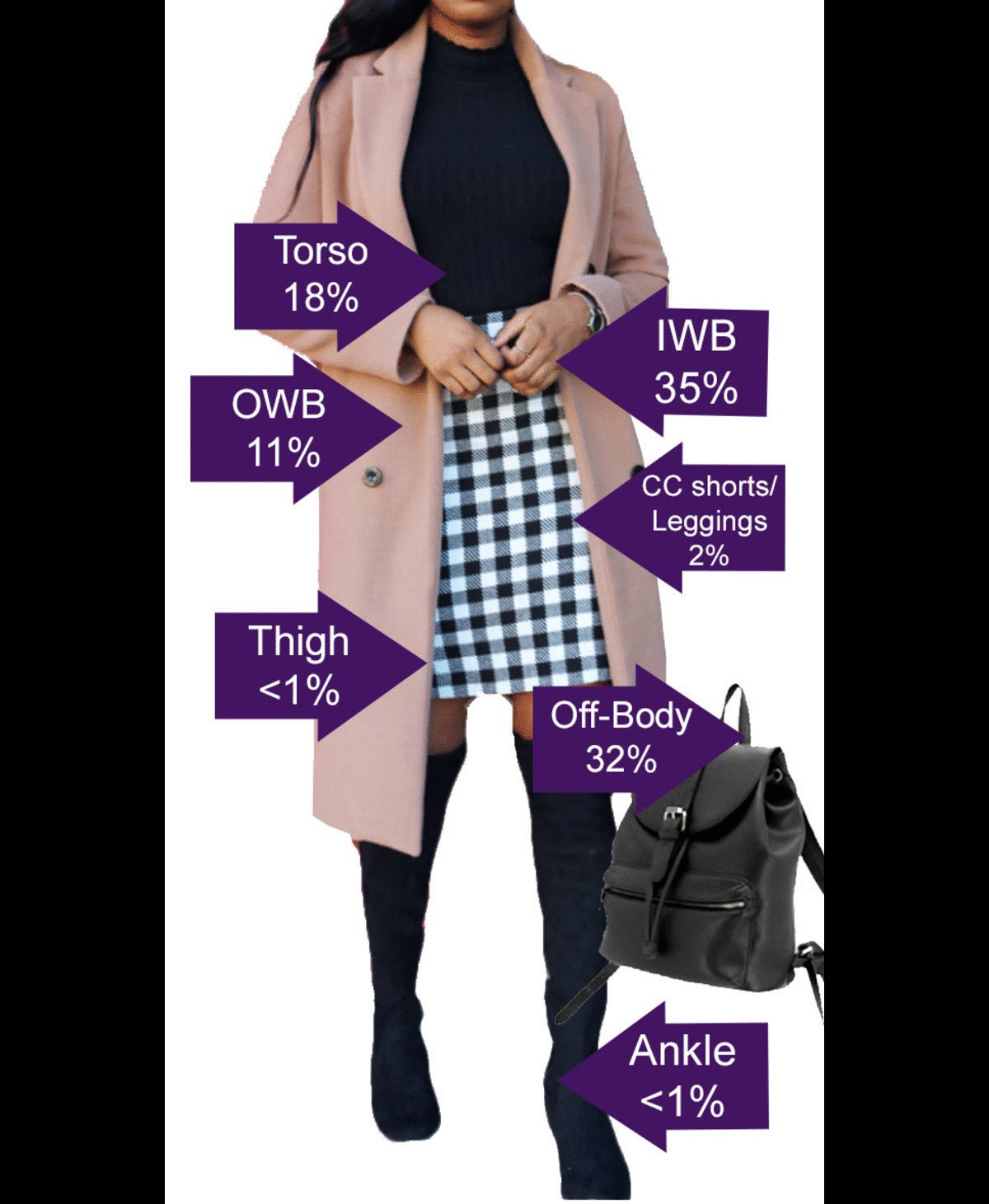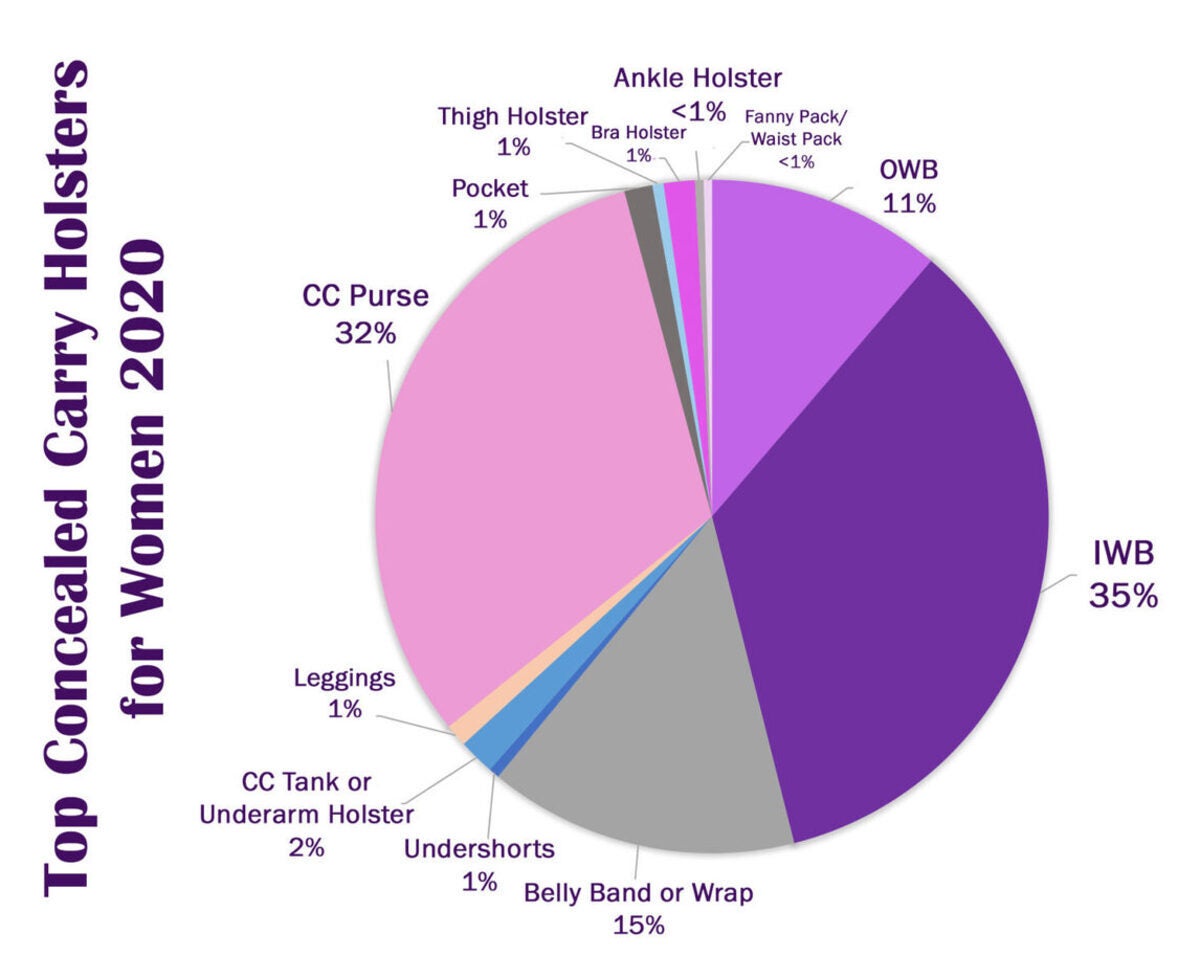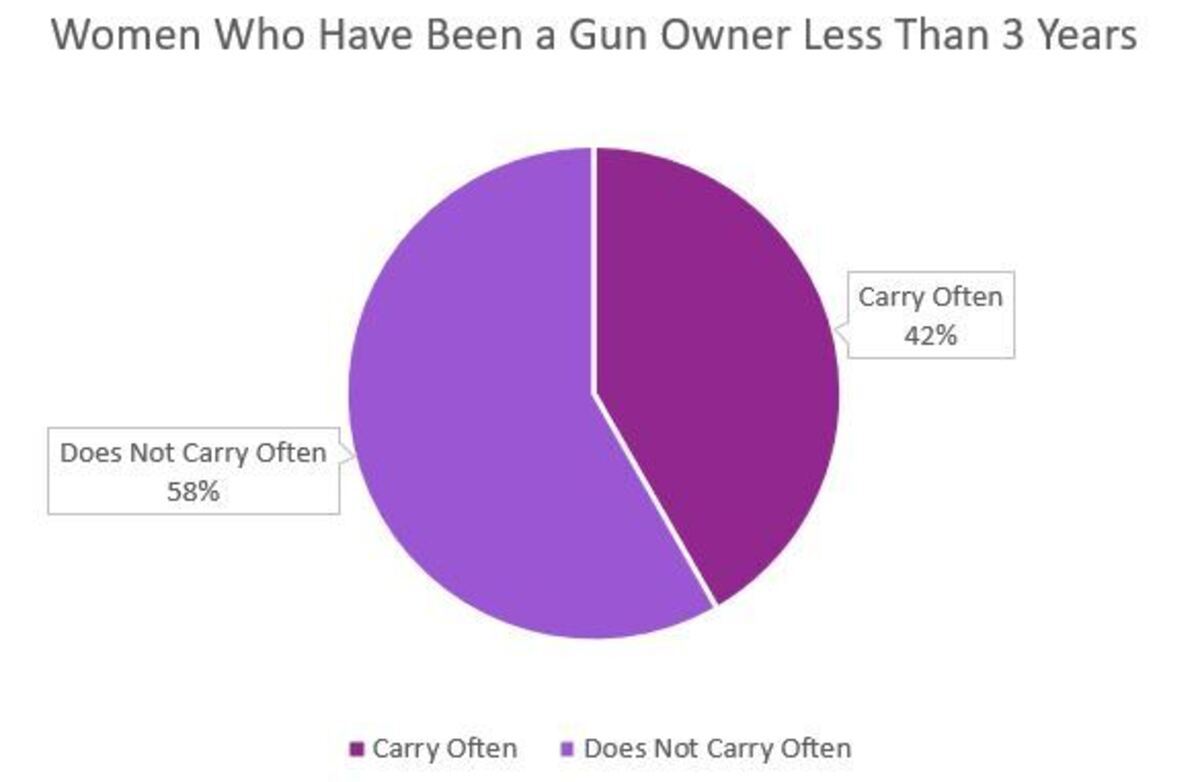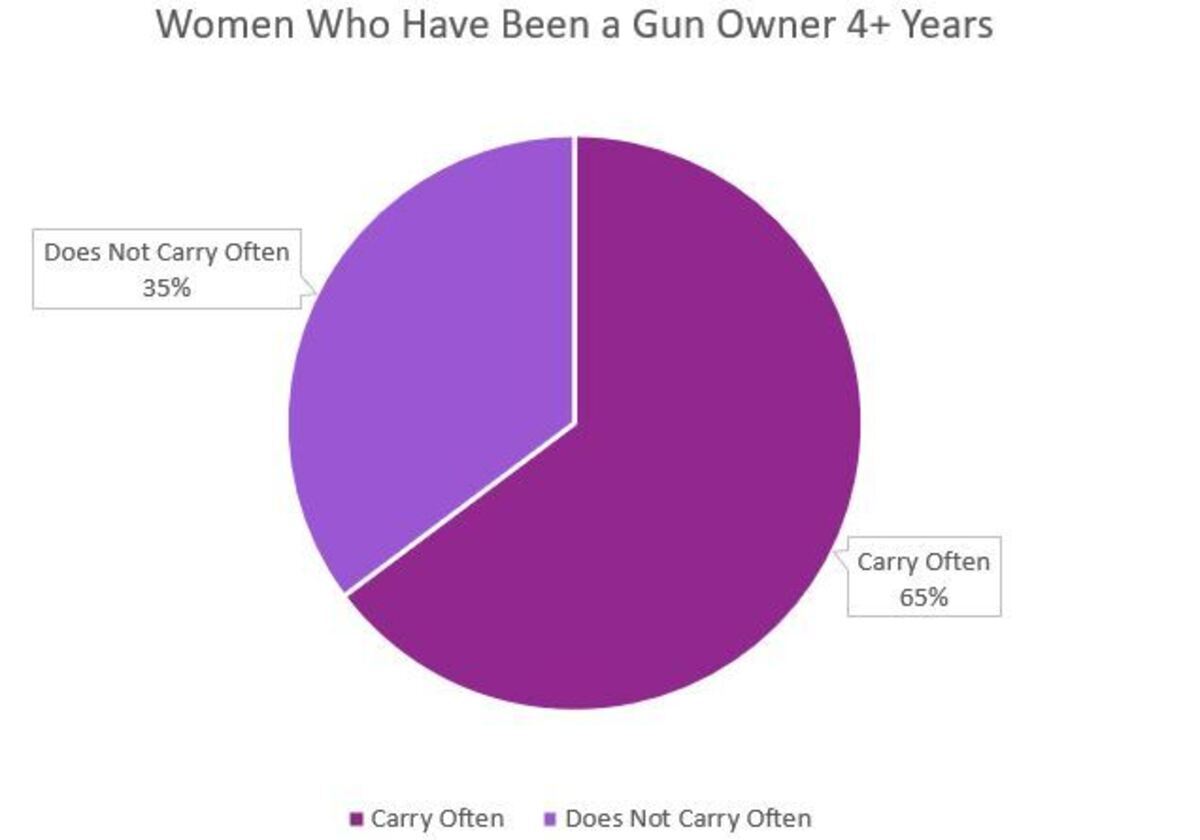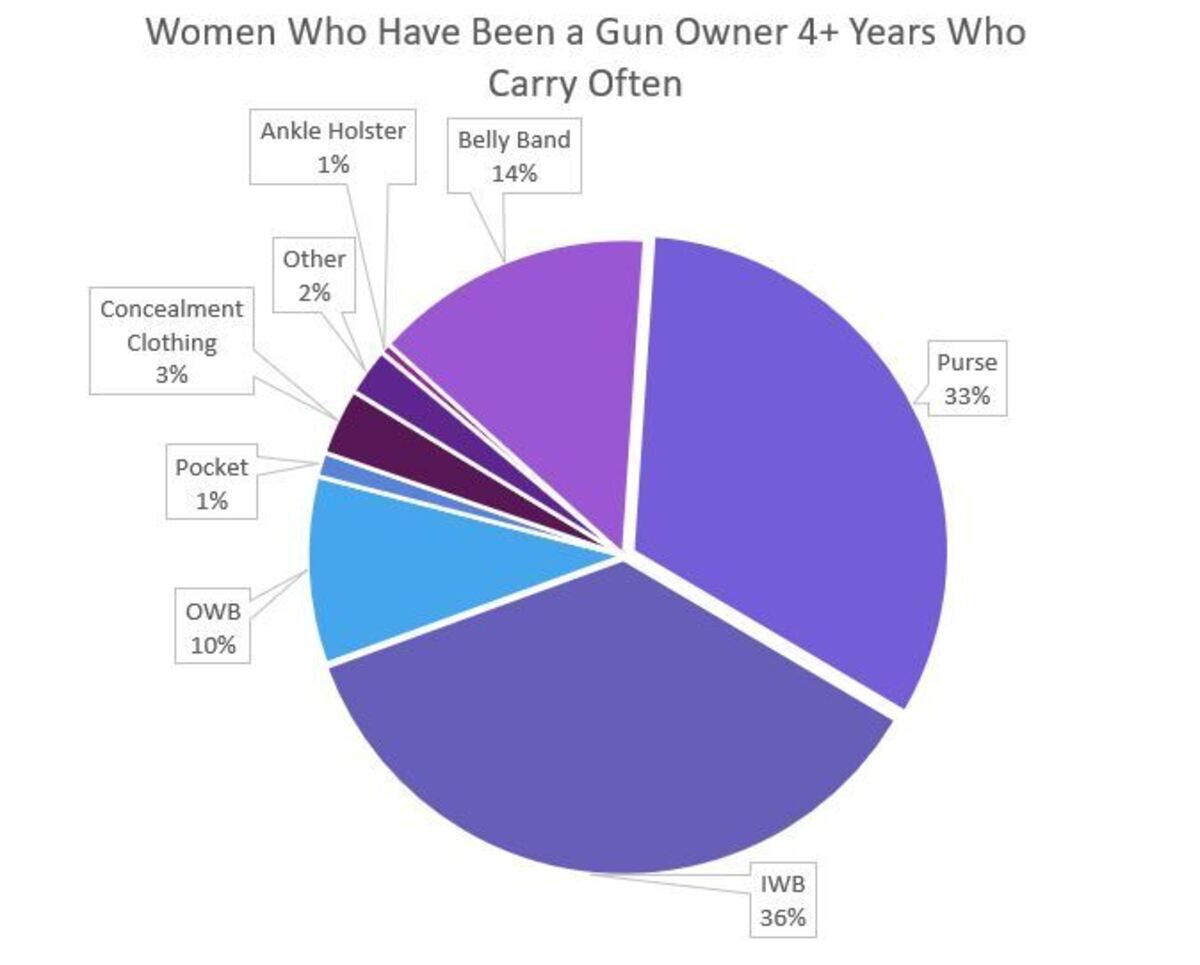Well-Armed Women are into IWB Carry, Says 2020 Survey
Eve Flanigan 03.29.21
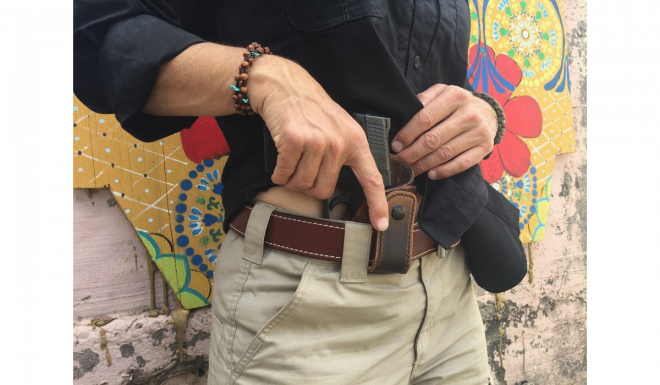
Every year around this time, The Well-Armed Woman (TWAW), a store operated by Arizona concealed carry instructor Carrie Lightfoot, publishes the results of an annual survey of women’s methods of concealed carry. TWAW just released the 2020 edition of the survey, which includes an impressive sampling of more than 5,500 women who carry guns concealed. If you’re not Impressed by that number of subjects, check out the sample sizes of published human testing of the hottest 2021 vaccines… but I digress.
TWAW has done a great job this year of covariant analysis of women who are new to concealed carry versus women with three or more years of experience with carrying concealed. While previous years’ data until now may have been viewed as suspect for non-disclosure of sampling methods or sample size, the 2020 report is a notable one for a couple reasons.
By disclosing the impressive sample size and categorizing women according to years of experience of concealed carry into two categories: 3+ years vs. less than 3 years, TWAW has entered the realm of “wake up and take notice” data. Not that the company’s previous surveys, presumably of its own customers, doesn’t matter.
In contrast, it speaks of a dedication that is rare in the concealed carry industry to understand its own market. By including more than 5,000 participants in the 2020 sample, TWAW shows apparent growth and maturity in understanding its market, of course, but the lessons that can be gleaned from the data are important. That importance is pertinent to holster makers, gun manufacturers, instructors, and even people entering the concealed carry realm for the first time.
Author Bias Disclosures/Qualifications
Any good research expert discloses their own biases up front. I am 1) Female; 2) Armed almost constantly since 2007; 3) A certified Instructor of concealed carry and other armed people since 2013; 4) A one-time consumer of a TWAW product (as such, I’ve never been asked to participate in the TWAW survey); 5) A holder of a Master of Public Health degree, AKA data junkie, with the paper being awarded in 2010; 6) An interested onlooker who’s been, until now, not excited by previous years’ editions of the TWAW carry positions survey, as I perceived the survey as not disclosing more data than it shared.
So those are my biases. Item 6 is the reason I’ve not previously written about the TWAW survey. As someone who understands the rudimentary principles of marketing, I appreciate Ms. Underwood and Co.’s reasons for not sharing the methodology of the annual women’s carry locations survey.
Research, after all, makes for deadly boring reading when done well. I share this report with the understanding that TWAW/Underwood probably have good business reasons for not disclosing how participants were selected each year. This writer has left voicemails with TWAW on three occasions, at least one year apart, regarding the data, and has not received an answer.
This writer did purchase a belly band holster from TWAW in approximately 2016 and was not contacted regarding the survey which has been going on for several years. And that “several years” bit is the part that has gained credibility in my view along with Ms. Underwood’s longstanding presence in the concealed carry training arena marked by things like her store, the annual survey, and a number of soundly common-sense-oriented instructional videos regarding concealed carry she’s published.
It’s unfortunate Ms. Underwood and others have limited their scope with the “women’s” label. Safe and effective concealed carry methods are, with a few exceptions, not gender-specific.
A classic test of gender bias is to turn the data around: When is the last time a men’s carry methods article was published? Sure, there are subtle differences in our strategies and methods of crime prevention, but that’s a long way from talking about holsters. My point is there is a lack of scientific research in the realm of concealed carry. Ms. Lightfoot’s work (like the work of any number of cardiology studies in which the samples included only men, but the results of which influence modern prescriptions for heart disease) should for now stand as “concealed carry” information to benefit the entire concealed carry community.
Survey Shows Mostly Promising News
Alright, enough with the qualifications. After a couple years of reading this survey, I’m finally writing about it for two reasons: 1) the impressive sample size of “more than 5,500,” even if we don’t get to hear how they were selected, and 2) the news that women—and maybe men too, for all we know—are carrying where they have a real chance of defending themselves on short notice. That is reason to celebrate, in my opinion.
Approximately 7% more (we’re not given error ranges) of respondents are carrying regularly after gaining at least four years of experience as a gun owner. That’s great news, indicative of greater confidence and hopefully competence with daily carry.
According to the survey, most women, 64% to be specific, are carrying on their body, somewhere between the hip and rib area. This area is, compared to other carry methods like a purse or ankle, generally more accessible to the person who’s in danger and less likely to be accessible to a child or ne’er-do-well whose hands have no business on the gun.
What’s more, inside-the-waistband (IWB) carry habits comprise 35% of the total. While behind-midline IWB carry is notorious for gun theft, so-called appendix IWB methods are the most accessible for most carriers, and safest when the time from hand-on-gun to sights-on-threat is considered. That said, anyone considering IWB carry must first master the skill of keeping fingers off triggers until they’ve decided to fire.
Survey respondents showed an average of 6% increase in women who carried in a purse – I’ve presented this as an average, as purse carry increased among both experienced and new carriers. With careful training, purse carry can offer tactical advantages at the risk of compromises in the realm of access. This is one example of an area in the concealment market where women have more choices than men. It is my hope that more capable people in the training community will step up to meet the needs of people who choose to carry in a purse or some other off-body method like a messenger, sling, or diaper bag.
Marketing Versus Reality
The findings are a refreshing form of notification to me, as an instructor, that women aren’t falling for the marketing ploys of those vendors that sell “concealed carry leggings,” some of which show a model with a gargantuan, full-size pistol occupying the stretched-to-the-limits-with-no-retention-strap-holster sewn into a bit of colorful pantyhose. Experience has shown me that the model in those pictures didn’t make it across the room, let alone through the end of her yoga class, without losing either gun, britches, or both!*
The free market is a good thing, but the unfortunate yin to that yang is that some patently unsafe holster setups make their way to the market – including the one just described.
Safety First, Tactics Second
If you’re considering concealed carry or are an existing practitioner of the art reading this, please keep in mind that any good concealment system does, in order of importance:
- Covers the trigger guard in such a way that it can’t be penetrated when you don’t want it to.
- Prevents the gun from falling out of concealment status in the context of your normal daily activities.
- Allows you to transition as subtly and swiftly as possible from concealment to defending yourself.
This new survey by TWAW has implications beyond so-called women’s carry. It’s worth taking note.
As a personal addendum, and owning the narrow perspective that is inherent in my own verbal surveys of returning students, I have been impressed by the dedication of female licensees who commonly say they carry daily, compared to males who more often comment they only keep a gun in the vehicle. The gun that’s not within reach cannot save you!
A wonderful thing about guns is they’re blind to gender, race, physical traits, and all that other stuff we use to define ourselves on the social plane. Samuel Colt’s famous product didn’t get the nickname “Equalizer” for nothing. That remains true today. Want to be a winner? The difference is made in one’s dedication to practice, the study of human behavior, and habitual carry.
*This should not be taken as a generalized comment against full-size handguns, which are the author’s preference!
Graphs are from TheWellArmedWoman.com. Cover photo shows a Blackhawk MBoss holster with Sig Sauer P365.
